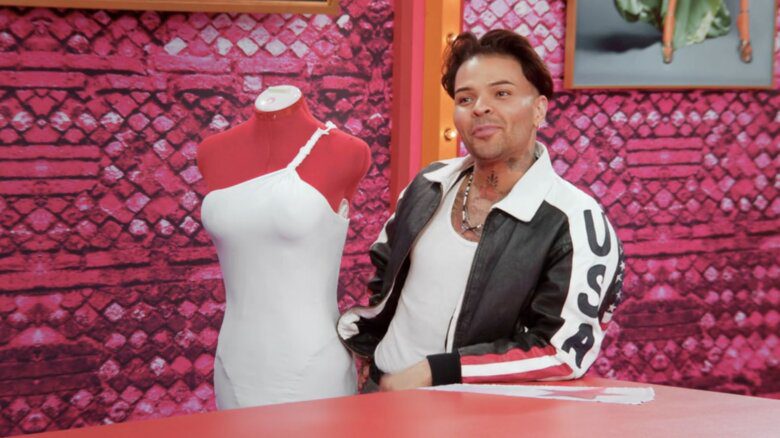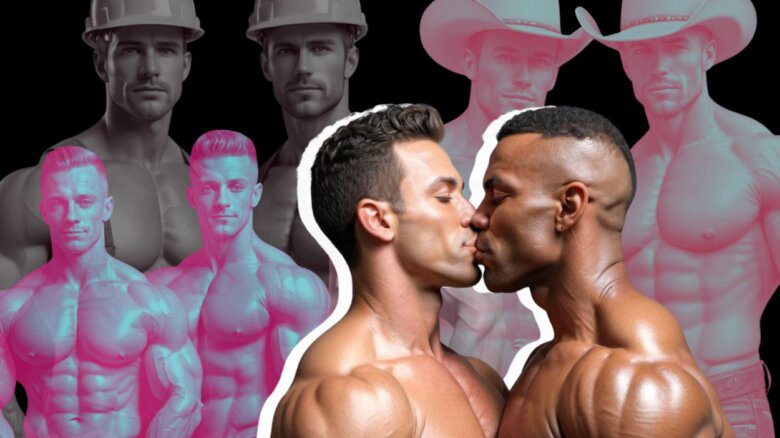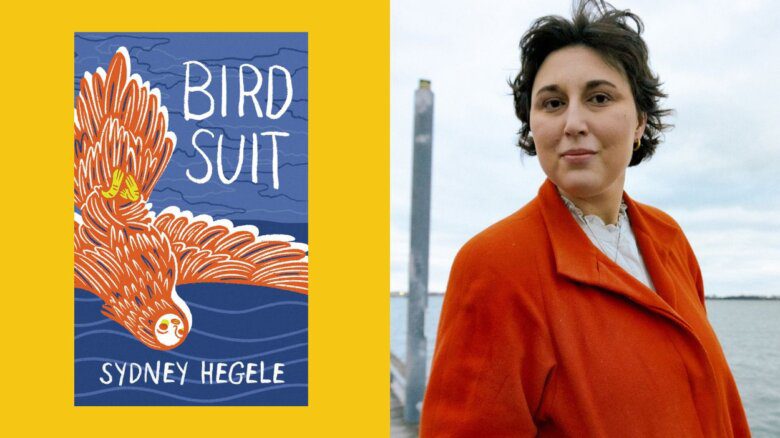When RuPaul’s Drag Race’s 15th season debuts on MTV this Friday, Jan. 6, it will turn the page from the show’s previous chapter, known henceforth in this piece as the “VH1 era.” This moment in time began with Season 9’s debut, featuring a cameo from none other than Lady Gaga, and was defined by extreme highs and lows as the show grew to accommodate a fandom beyond the LGBTQ2S+ viewers on its previous home, Logo.
Defining the era is a Herculean task, but any attempt to encapsulate it has to start with the people who made us tune into the Emmy-winning show week after week (and, as the era waned, more and more weeks of the year). That’s why we offer you this list of 12 queens we think best represent the show and its ethos.
To make this list, we looked at any queen who made a major impression on one or more American seasons of RuPaul’s Drag Race from Season 9 through 14, as well as All Stars’ impact on the franchise during that period. Other appearances were considered as well—as you’ll see, Canada’s Drag Race is a part of several queens’ journeys—but they had to at least once appear on an American season during this period. (Apologies to queens like Jimbo, Bimini and Carmen Farala, who all made an impact on international seasons during this time, but we had to limit ourselves somehow—else you’d be here all day reading this!)
We also want to emphasize that these dozen queens weren’t the only ones to stand out in the VH1 era. So many talented drag artists have made this show as compelling and watchable as it is. But when we were considering this list, there was something about each of these Drag Race competitors that felt emblematic of the past six years of the franchise. So here, in alphabetical order, are 12 queens who we think defined the VH1 era.
Brooke Lynn Hytes
Original Season: 11
Other Drag Race Appearances: hosting Canada’s Drag Race, mentoring on Secret Celebrity Drag Race Season 2
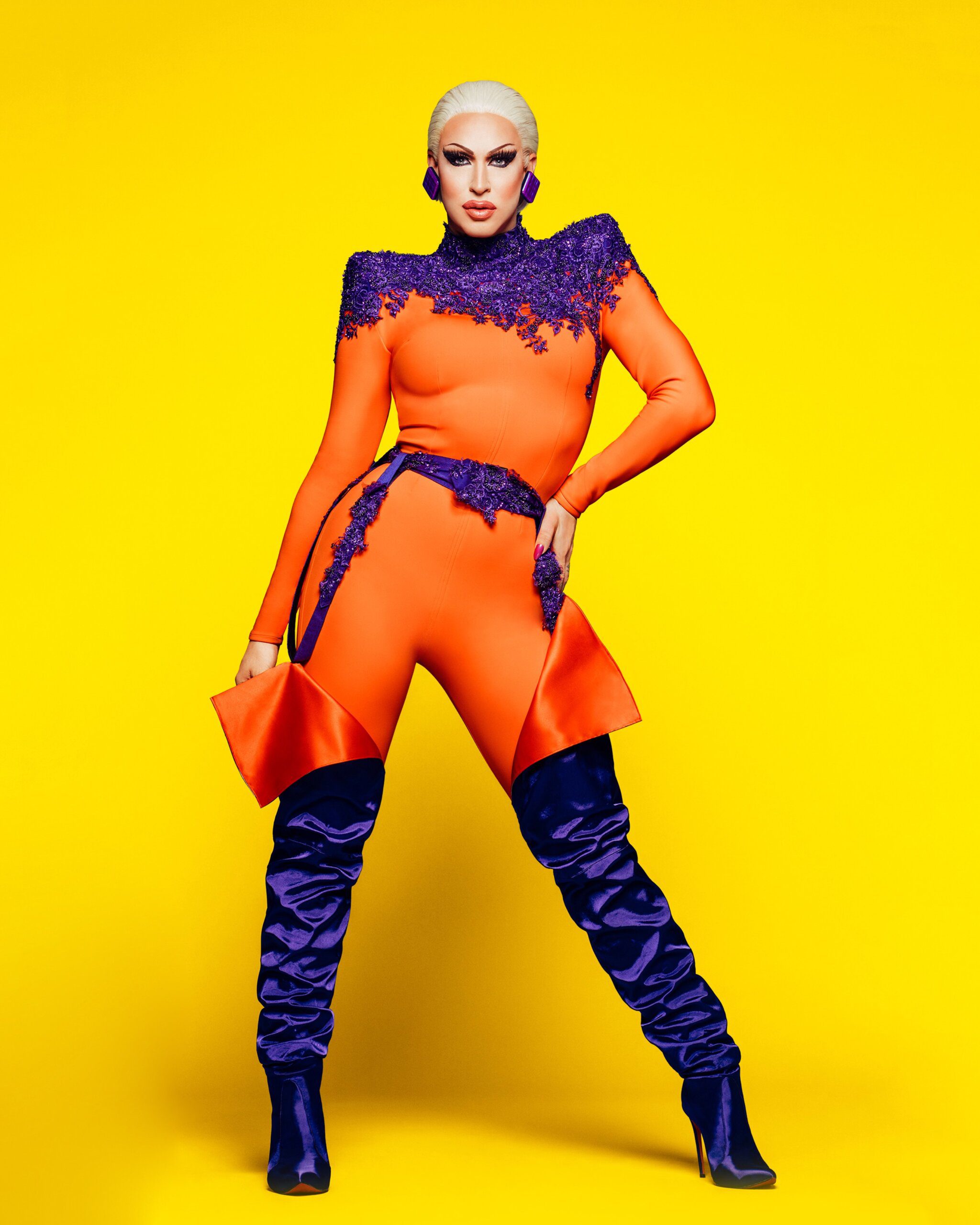
Credit: Courtesy World of Wonder
A Canadian ballerina queen walks into RuPaul’s Drag Race, and walks out as host of a show of her own. Though Brooke Lynn didn’t win Season 11, coming in second to Yvie Oddly, she more than made a big impression. She racked up the best track record of the season with three wins, and also thrilled the fandom alongside Yvie with their terrific “Sorry Not Sorry” lip sync. She left the show in about as strong a place as one would want as a non-winner—and a plum opportunity was just about to open up.
Canada’s Drag Race launched in the summer of 2020 with an awkward multi-judge and guest-host system, one that was massively retooled after its first season. But the one person who survived that reshuffle, and gained an even bigger role, was Brooke Lynn herself. As the only drag queen on the panel, she took the most RuPaul-esque role, a position that grew as the show changed its format in Season 2. With the new responsibility, and as she blossomed in her new role, Brooke Lynn defined what a RuGirl-turned-hostess’s job might look like. She continued to expand her reach by joining Secret Celebrity Drag Race in its second season as a mentor, seating herself alongside legends like Jujubee and Monét X Change.
With more and more RuGirls joining judging panels of international Drag Race editions—Nicky Doll in France, Jiggly Caliente in the Philippines, Rita Baga in Belgique and so on—we can look to Brooke Lynn as a barrier-breaker. She, alongside host-turned-RuGirl Pangina Heals, set the standard. And we can’t wait to see her continue to grow in the role.
Eureka!
Original Season: 9
Other Drag Race Appearances: a finalist on both Season 10 and All Stars 6, guest performer on Secret Celebrity Drag Race Season 2
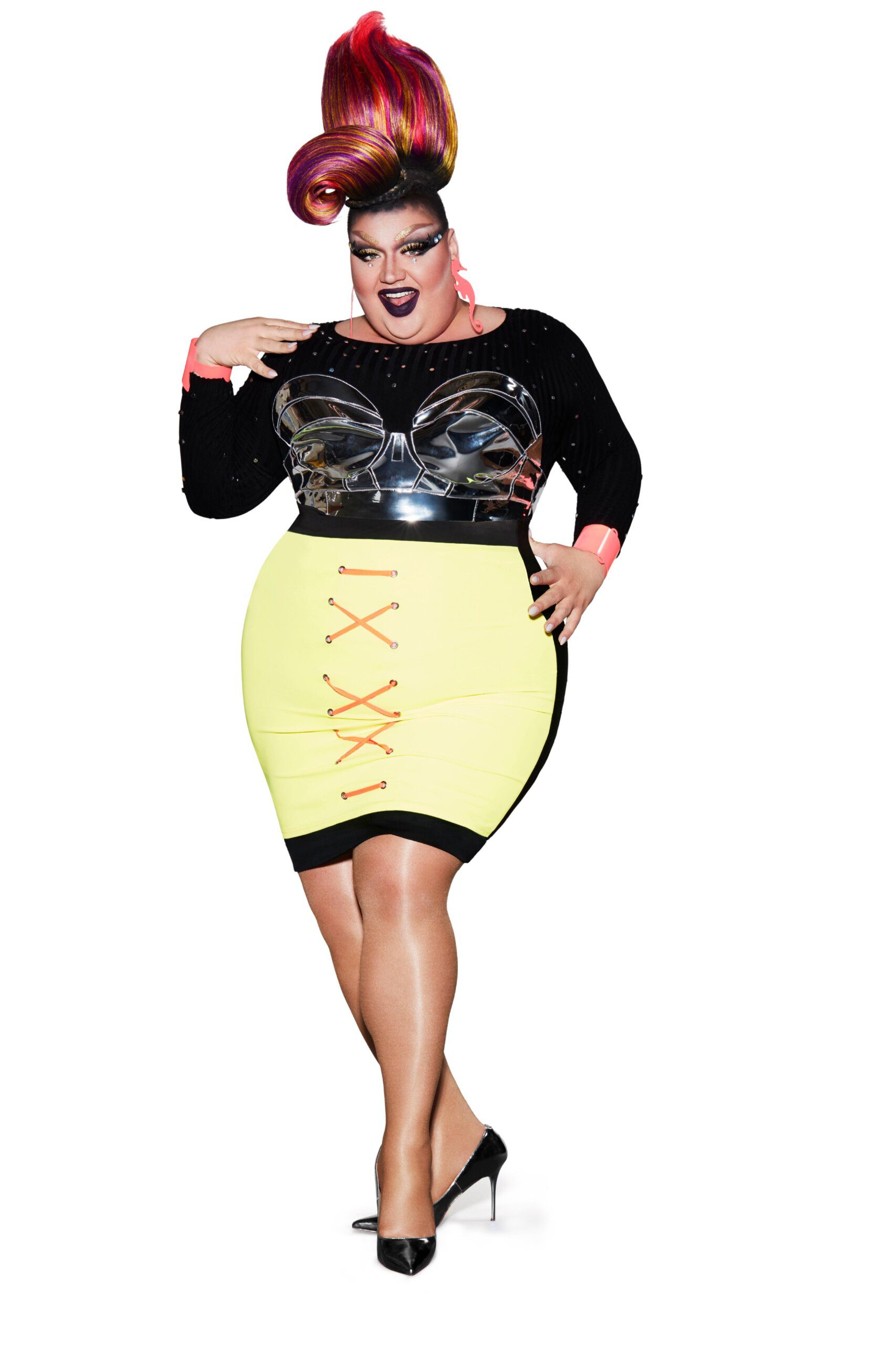
Credit: Courtesy World of Wonder
If there was one dominant theme of the VH1 era, it was Rudemption—but this queen took it even further. Once Drag Race started producing seasons for VH1 specifically, it produced Seasons 10 and 11 with emphasis on storyline above all else. These stories featured “villains” who were most frequently defined by their conflicts. One of those was Eureka! (then Eureka O’Hara), who first appeared in Season 9 before being pulled for a knee injury. They returned in Season 10, and the reception to her time on the show was unkind, to say the least.
As the Drag Race community learned well over the past few years, any “character” on the show is a product of multiple authors: the queen themselves, the producers working with them, the editors in post-production, etc. But even now, queens themselves take the brunt of the blame for their portrayal. Eureka!, not always the most delicate in her conversations, was flattened into a villainous character in Season 10. But that was an unfair characterization of them—and she used opportunities like HBO’s We’re Here to better demonstrate who she is.
Come All Stars 6, a season that saw several queens find Rudemption, and Eureka! get the portrayal she deserved. She was funny, competitive, honest and engaging—qualities that could be seen in her other appearances, but now weren’t obscured by an edit that pushed them to the side. Eureka!’s journey was emblematic of an era that saw Drag Race’s production team let the queens be as authentic as the audience wanted them to be. This went beyond Rudemption: it was correcting the Rucord.
Kylie Sonique Love
Original Season: 2
Other Drag Race Appearances: breaking out in the Holi-slay Spectacular, winning All Stars 6, co-starring in Dragging the Classics: The Brady Bunch

Credit: Courtesy World of Wonder
You could begin and end a list of just how historic and paradigm-shifting Kylie Sonique Love’s triumph is in All Stars 6 is with a simple acknowledgement that she was the U.S. series’ very first out trans woman to take the crown. Given the show’s notorious missteps in addressing the role that trans people, especially trans women, play in the history of the art of drag, Kylie’s victory stands as many things: a correction, a mea culpa, even a promise to do better by its trans contestants.
And many of those things have come to bear: since Kylie’s win, trans representation has ballooned on the show, with two out trans women, Kerri Colby and Kornbread “The Snack” Jeté, being cast on Season 14, and three other members of the cast coming out as trans by the time the final VH1 season wrapped.
But Kylie’s win means much more beyond the show’s identity politics; Kylie is the first All Stars winner to place outside the top six of her original season. Her win portends the show’s willingness to switch up the philosophy that drives its All Stars franchise. While All Stars easily could have been a chance for former top dogs to get the crown that eluded them, a designation that matches the wins for Chad Michaels, Alaska, Monét X Change, Trinity the Tuck and Shea Couleé. However, unlike previous entrants in the Drag Race Hall of Fame, Kylie placed ninth in her original season, appearing in only four episodes and going home on the first-ever Snatch Game.
Kylie’s win espouses a different philosophy behind All Stars seasons, one that has definitely driven the flourishing of the vs The World and the upcoming Global All Stars franchises: every queen has a story to tell, not just people who once were close to winning. Her win provided justice for trans queens, but also a reminder to the fandom that all queens, no matter where they place in their original seasons, have talent and looks to show and are worthy of renewed attention.
Monét X Change
Original Season: 10
Other Drag Race Appearances: winner of All Stars 4 alongside Trinity the Tuck, runner-up in All Stars 7, mentor on Secret Celebrity Drag Race Seasons 1 and 2
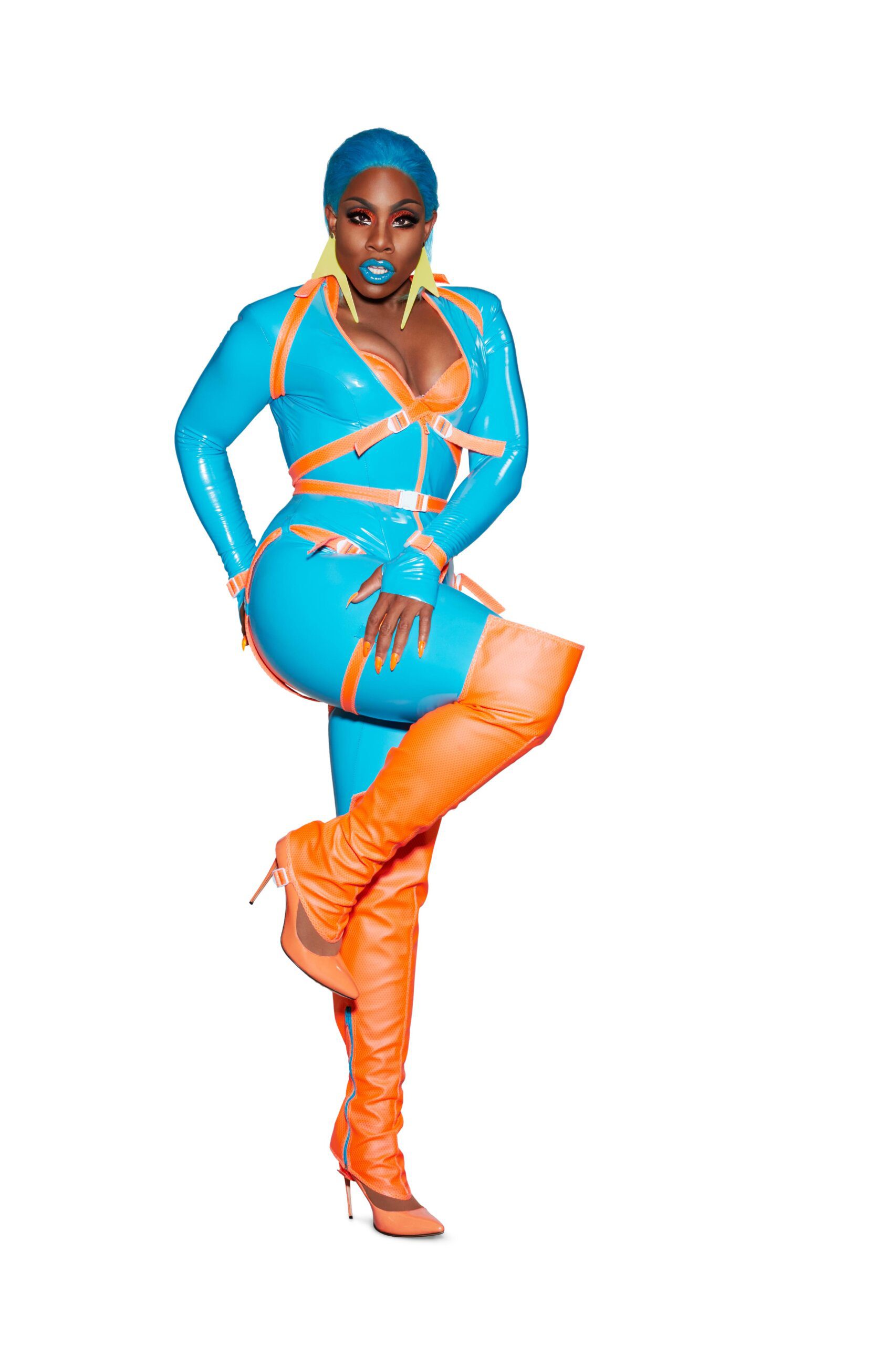
Credit: Courtesy World of Wonder
From Episode 1 of Season 10 onward, Monét X Change showed that she knew how to brand herself in the quickly evolving Drag Race ecosystem. She made her “Drag on a Dime” outfit out of sponges, even fashioning old ping pong balls to be soap suds and painting her face to represent water. She had a catchphrase: “Soak it up!” From that moment, Monét seemed poised to make it all the way to the finale, though she fell short, landing in sixth place.
When she walked into the werk room again on All Stars 4, Monét said herself that she knew her runways held her back from going any further on her original season—and that she was ready to course-correct. More than any other queen in the VH1 era, Monét represents the willingness for the show to really invest in queens who blossom over time, even when they come in seemingly fully formed.
For those who don’t remember, Monét’s All Stars 4 win was also a tad controversial, not only because she was one half of the show’s only double crowning, but because she didn’t have the track record that Trinity the Tuck did at the time. However, her undeniable performance in the finale clearly showed that the show is willing to reward the goods when you put them out on display.
Which brings us now to All Stars 7 where Monét, a queen who won no challenges on her original season and then became a controversial winner, was bested only by one of the most beloved queens in Drag Race herstory. Monét’s performance garnered her several viral moments, including her spoken-word lip sync to the Designing Women monologue and her opera performance. In a world where “Meet the Queens” stresses that queens come into Drag Race fully formed, Monét X Change’s tenure serves as a testament to the slow burn.
Naomi Smalls
Original Season: 8
Other Drag Race Appearances: a finalist on All Stars 4, and a cast member on RuPaul’s Drag Race Vegas Revue
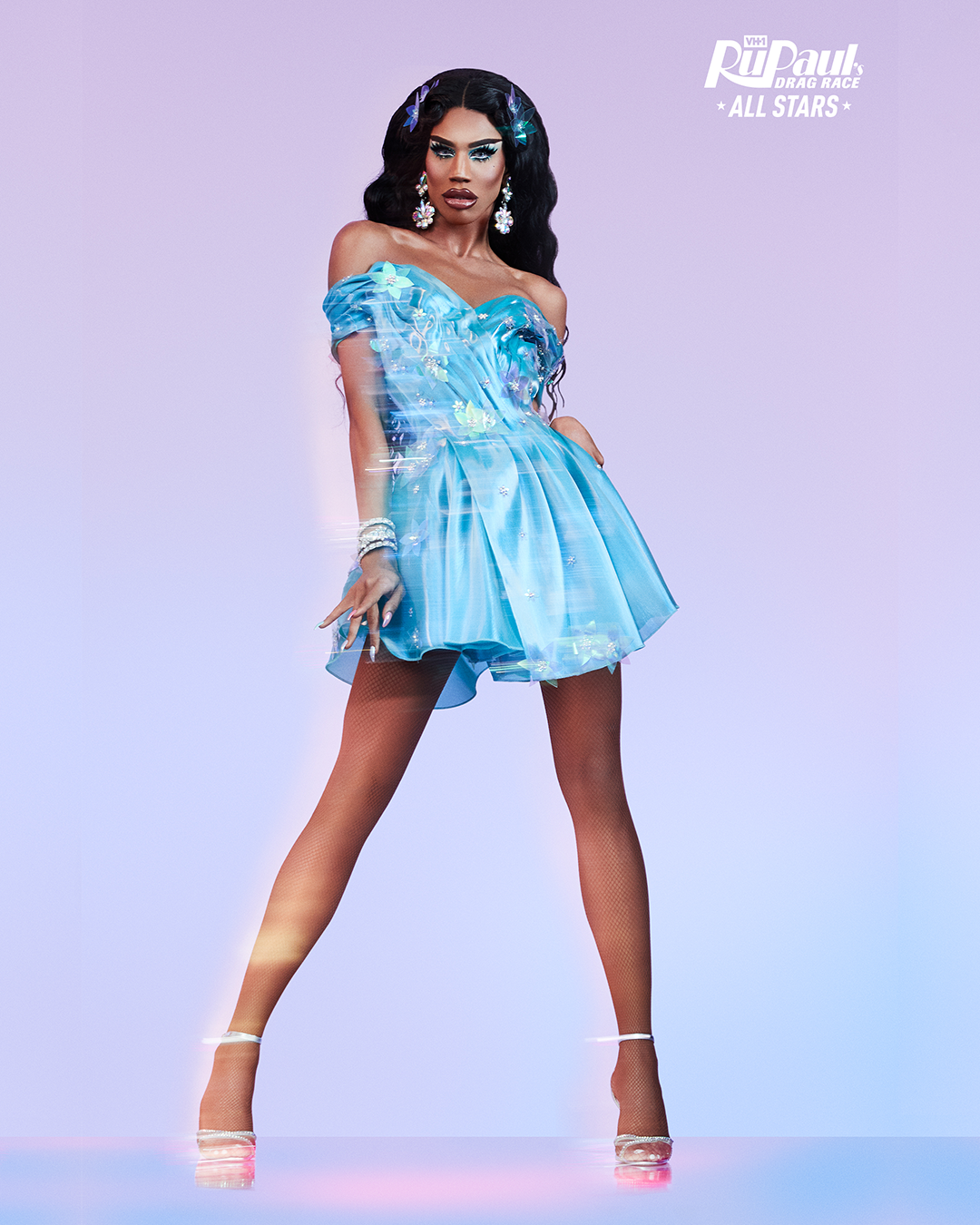
Credit: Courtesy World of Wonder
By and large, the All Stars format is plagued with one problem: predictability. Take a look at the last few seasons and the question of which queen is going home is not exactly a Knives Out-level whodunit. Look back over the Wikipedia pages for the seasons, and even the queens are, more often than not, in lock-step about who should be sent home. Part of this stems from fear of the fandom, for sure: queens eliminate based on judges’ critiques so as to not ruffle fans’ feathers and end up enduring online hate. Valentina said it best when she said why she would not eliminate Latrice Royale: you don’t send home the beloved.
Naomi Smalls came to blow that to bits. In All Stars 4, Naomi Smalls briefly metamorphosed Drag Race All Stars into Drag Race Survivor, making the cutthroat decision to take her best shot while frontrunner (and her personal icon) Manila Luzon was vulnerable. In the short term, she secured herself a spot in the top four. In the long term, Naomi cast blood into the water and suddenly, we all became sharks. Though All Stars seasons haven’t exactly gotten more bloodlust—in fact, All Stars 5’s elimination order was sometimes too predictable—Naomi’s choice has reverberated throughout the larger Drag Race world.
There are certainly echoes of that fateful decision in the runs of both UK vs The World and Canada vs The World, where queens are more willing to foster alliances and send home golden children, irrespective of track record. As Drag Race continues to play with format, and roll out more franchises, watch for Naomi’s decision to become even more portentous—not only for a game where queens are willing to become more cutthroat, but of formats where queens will be asked to make tougher choices and employ strategy.
Ra’Jah O’Hara
Original Season: 11
Other Drag Race Appearances: a finalist on All Stars 6 and the winner of Canada’s Drag Race: Canada vs The World

Credit: Courtesy World of Wonder
The Ra’Jah O’Hara story, more than any other, encapsulates the back half of the VH1 era. In Season 11, Ra’Jah was cast as a villain—through an edit that, as others have pointed out, was created by using all the hallmarks of reality TV. But by her own admission, Ra’Jah did not present the version of herself that she wanted fans to see that season. “Ra’Jah is a bad bitch,” she said in her reintroduction on All Stars 6. “But on Season 11, she was just a bitch.” She would later open up about the ways in which it took watching Season 11 to find a whole new outlook on herself and her drag. And it was that outlook that made her a breakout star of All Stars 6.
Despite a great performance in All Stars, 2021 was not the time for Ra’Jah to win. Kylie took the crown, telling a winning story of waiting 11 years for her chance to reintroduce herself to fans. Ra’Jah, on the other hand, had one final act of her story to come in Canada vs The World. During that season, especially in the finale, Ra’Jah made the argument that this third Drag Race appearance was the culmination of an epic journey. And while some moments were coincidental—a rocketship-themed final photo shoot years after Ra’Jah left Season 11 saying “to the moon,” for instance—Ra’Jah understood how to use those as a springboard to tell her story. While she didn’t have the best track record by season’s end, it nonetheless felt right that she would be the one to become the Queen of the Mother-Pucking World.
Ra’Jah’s crowning was the capstone moment that the VH1 era needed before it came to a close. Her four-year Drag Race arc came entirely during this period; watching her be crowned by one of her Season 11 sisters, and standing next to another Season 11 sister was all the more magical. As Drag Race grows more and more global, it’s our hope that the MTV era can tell stories with the same cross-season gravitas Ra’Jah’s had.
Sasha Velour
Original Season: 9
Other Drag Race Appearances: returning as the current reigning to crown Aquaria in Season 10

Credit: Courtesy World of Wonder
When the opening notes of “So Emotional” began to play during Season 9’s Lip Sync Smackdown for the Crown, some people believed they were an overture to an inevitable Shea Couleé victory. And then, as Shea said in the opening of All Stars 5, the rose petals came. Those rose petals not only veered the predictability of the season finale off course, they changed production’s eye toward what could be its biggest viral moment: lip syncs.
Now, before we go on praising Sasha, it’s important to remember that Season 9 had several botched lip syncs, such as Charlie Hides’s standing there on “I Wanna Go” or Valentina presaging COVID during “Greedy.” And, when Peppermint refused to go down without a fight just before the top three, she ushered in the Lip Sync for the Crown finale.
While all that is well and good, none of that would mean anything if Sasha Velour hadn’t understood the power of live (okay, prerecorded) television. She knew what it meant to get a reaction not only from a panel of judges, but from a studio audience. It makes perfect sense that Sasha is the engineer behind one of the greatest ongoing drag shows, NightGowns, because that night, Drag Race was NightGowns.
But beyond Sasha’s singularity in that performance, the rose petals were the sneeze that gave Drag Race the flu. Lip syncs, it turned out, would create viral moments and bring continued investment in the show. How many Friday nights have you spent watching lip syncs with friends, and dissecting just how brilliant a certain queen is? Those moments are brought to you by Sasha. It’s hard to underscore just how much what was once an elimination tool has become a hallmark of the entire franchise: there’s Lip Sync for the Crown, LalaPaRuZa, Drag Race UK 3’s top and bottom lip sync format, the post-Snatch Game lip sync of Season 14—do we need to go on?
If you’ve ever gotten a taste of virality, then you know the high, and Sasha has had Drag Race producers chasing it for over five years now.
Shea Couleé
Original Season: 9
Other Drag Race Appearances: winner of All Stars 5, finalist in All Stars 7, co-starring in Dragging the Classics: The Brady Bunch

Credit: Courtesy World of Wonder
Shea’s loss in Season 9 was quite literally unprecedented: the only other queen to win four maxi-challenges in a regular season had won Season 4, and none of Shea’s fellow finalists’ track records could compare to hers. Just one season prior, at the end of the Logo era, Bob the Drag Queen had cited her report card as one of the primary factors for her to be crowned in her season-ending speech. But the shift to the Lip Sync for the Crown finale format at the start of the VH1 era meant simply doing the best in the season was no longer enough to take the title — and so Shea became the first queen with the best record not to win. (She would not be the last.)
When she returned for All Stars 5, like Chad and Alaska before her, Shea was the immediate favourite to take the crown. However, Shea didn’t rest on that expectation: she won new kinds of challenges with a killer girl group verse and Flavor Flav Snatch Game, she stunned each week on the runway and she proved that, in any context not involving rose petals, she could turn the hell out of a lip sync. But more than that, Shea used her second appearance on the show to turn her run into a narrative: she was haunted by her loss in the Season 9 finale, and sought to reclaim that experience and its imagery (her rose petal Carrie dress!) for herself.
Shea earned that All Stars 5 crown, and then came back for another on All Stars 7. It was admittedly unlikely that she would win again so soon, and judging by her scores that always felt lower than her output (until that ill-advised three-star twist), Ru and the panel may not have been ready to be surprised by her again. But despite that, Shea delivered another great season, and became one of only two queens to compete in three separate finales. She is a titan of Drag Race, and she is a key figure of the VH1 era.
Silky Nutmeg Ganache
Original Season: 11
Other Drag Race Appearances: the Lip Sync Guru of All Stars 6, a finalist on Canada’s Drag Race: Canada vs The World, guest performer on Secret Celebrity Drag Race Season 2

Credit: Courtesy World of Wonder
As Pam Tillis once sang in a “Mi Vida Loca” lip sync between Willam and Jiggly Caliente, destiny turns on a dime. And if you happen to be Season 11 finalist Silky Nutmeg Ganache, that dime is All Stars 6, Episode 10, “Rudemption Lip Sync Smackdown.”
Silky entered Season 11 with a stellar “Meet the Queens” video under her belt and plenty of fan support. It’s an understatement to say that that support withered as Yvie Oddly became a passionate fan favourite, and Silky and Yvie began to spar both on the show and in Untucked. Being on the wrong end of fandom passion can be hard, as Silky herself spoke about during her time while she was on Canada vs The World.
But, the tides of passion also change, which was clear when she delivered what is possibly the single best performance ever given by a queen in a single episode of Drag Race. During the episode, much as in Top Chef’s Last Chance Kitchen, eliminated queens competed one by one, in elimination order, to see who would win a spot in the final episode before the finale. During the episode, Silky bested not one, not two, not three, not four, but a whopping five contestants in lip syncs in one episode. (Though she beat five contestants, she won six lip syncs, given that her Season 11 sister A’keria C. Davenport chose not to participate in the tournament.)
Silky’s fates, and her place among the fandom, changed that day, as she showed us just what a fierce performer she was, and spoke to the judges about the time she took to prepare for each battle. With renewed respect, she came into Canada vs The World and did something that all of our favourite queens do: become vulnerable. While her time on All Stars 6 had reintroduced us to her charisma and talent, it was her Canada tenure that really showed her uniqueness and nerve. Great stories like Silky’s often come in a three-act structure, but when it comes to this talented queen, an epilogue is due.
Symone
Original Season: 13
Other Drag Race Appearances: returning as the current reigning to crown Willow Pill in Season 14
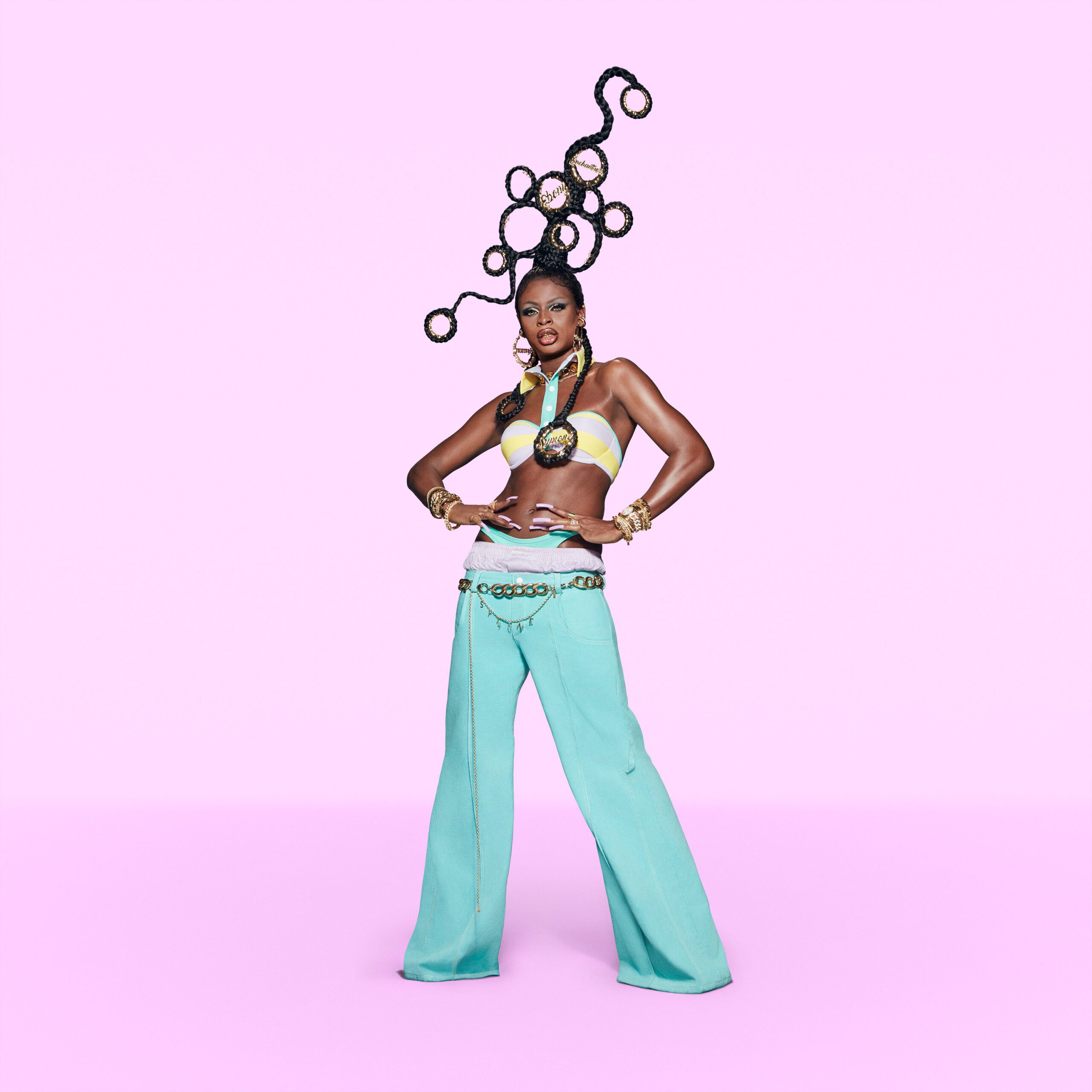
Credit: Courtesy World of Wonder
No Drag Race winner has had a reign like Symone did. In the 12 months that followed her victory, the Arkansas-turned-Angeleno queen covered magazines, appeared on talk shows, stunned in countless event appearances (most notably the Met Gala) and generally served as a dream ambassador for the brand. It got to a point that she actually had to learn how to say “no” to offers—that’s how in demand she was.
But how could she not be? Symone’s run on Season 13 was the stuff of legends. Not only did she win a record-tying four challenges and record-smashing seven lip syncs in a single season, she did so with a true understanding of her personal style, a compelling story that she knew how to tell without coming across as manufactured and Ru’s almost-instant adoration. The host told her in just her second episode that she has “star quality,” and boy, was he on the money.
When she came back for the Season 14 finale, Symone was perhaps the best-positioned to try and compete with Violet Chachki’s legendary current reigning gown from Season 8. But in yet another sign that she’s a truly savvy queen, Symone didn’t even attempt to outdo the Season 7 winner. Instead, she wore an immaculately rendered take on a crop top and jeans that spoke to her particular take on Y2K style. It was an audacious choice, one that drew as many detractors (“too simple!”) as it did fans (“perfectly her!”)
We’re personally fans of the look, but it was something else in the finale that caught our attention even more: the way that, when Ru suddenly wasn’t on the stage, Symone hosted with tremendous ease and command. After years of debate and discussion about who could possibly be Ru’s heir apparent, Symone came along and made clear she had the potential—without ever stepping on Mother’s toes. The MTV era will still feature Ru, and we don’t see him retiring any time soon, but don’t be surprised if we one day see the dawn of the Symone era.
Trinity the Tuck
Original Season: 9
Other Drag Race Appearances: winner of All Stars 4 alongside Monét X Change, finalist in All Stars 7, mentor on Secret Celebrity Drag Race Season 1
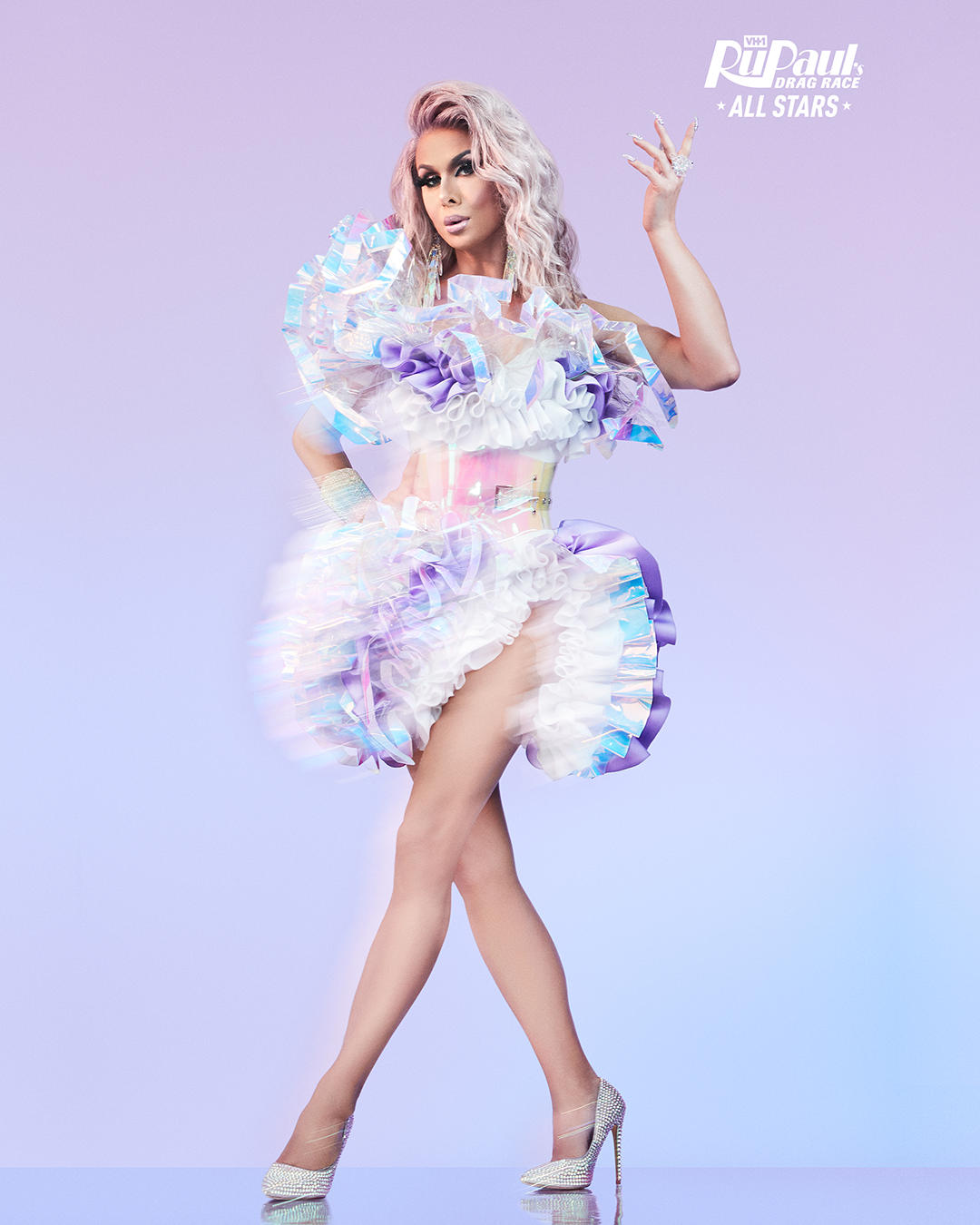
Credit: Courtesy World of Wonder
Some queens are good at drag, and some queens are good at Drag Race. Sometimes, queens are good at both. Trinity the Tuck is indeed great at drag, but she is unparalleled at Drag Race.
Throughout three seasons during the VH1 era, Trinity put on three master classes of how to win this show, to the point where it’s kind of remarkable she only won it once. In Season 9, as “Trinity Taylor,” she was vastly underestimated coming in (talk on Reddit ahead of the season often predicted she’d be one of the first out), only to play into a storyline of a pageant queen learning that she’s much more than her stereotype. She leaned into comedy, tried on different kinds of looks (her Club Kid runway!) and left a tremendous impression. She was a victim of the Lip Sync for the Crown format like Shea, though, losing to Peppermint’s iconic “Stronger” lip sync performance.
She came back for All Stars 4 with elevated drag, a fierce loyalty to her friends in the competition and an emphasis on the kind of dumb-but-game comedy that Ru and Michelle Visage love. She won four challenges on her way to the finale, and in a shocker, tied with Monét for the crown. They both came back for All Stars 7, and Trinity racked up another four wins to her name. This gave her the most career challenge wins of any Drag Race contestant with 11 total, and earned her a spot in the finale once again. However, like in Season 9, she was eliminated in a Lip Sync for the Crown tournament, leading Jinkx Monsoon to ultimately take the crown.
It can be tempting to dismiss Trinity’s prowess on Drag Race because she so strongly appeals to Ru’s sense of humour, or because she’s never won the crown on her own. But make no mistake: of the many, many queens we met during this era of Drag Race, you’d be hard-pressed to find someone who gets how to win this show quite like Trinity does. You could bring her back 100 times and that would be true—and something tells us she’d be game every single time.
The Vixen
Original Season: 10
Other Drag Race Appearances: none yet
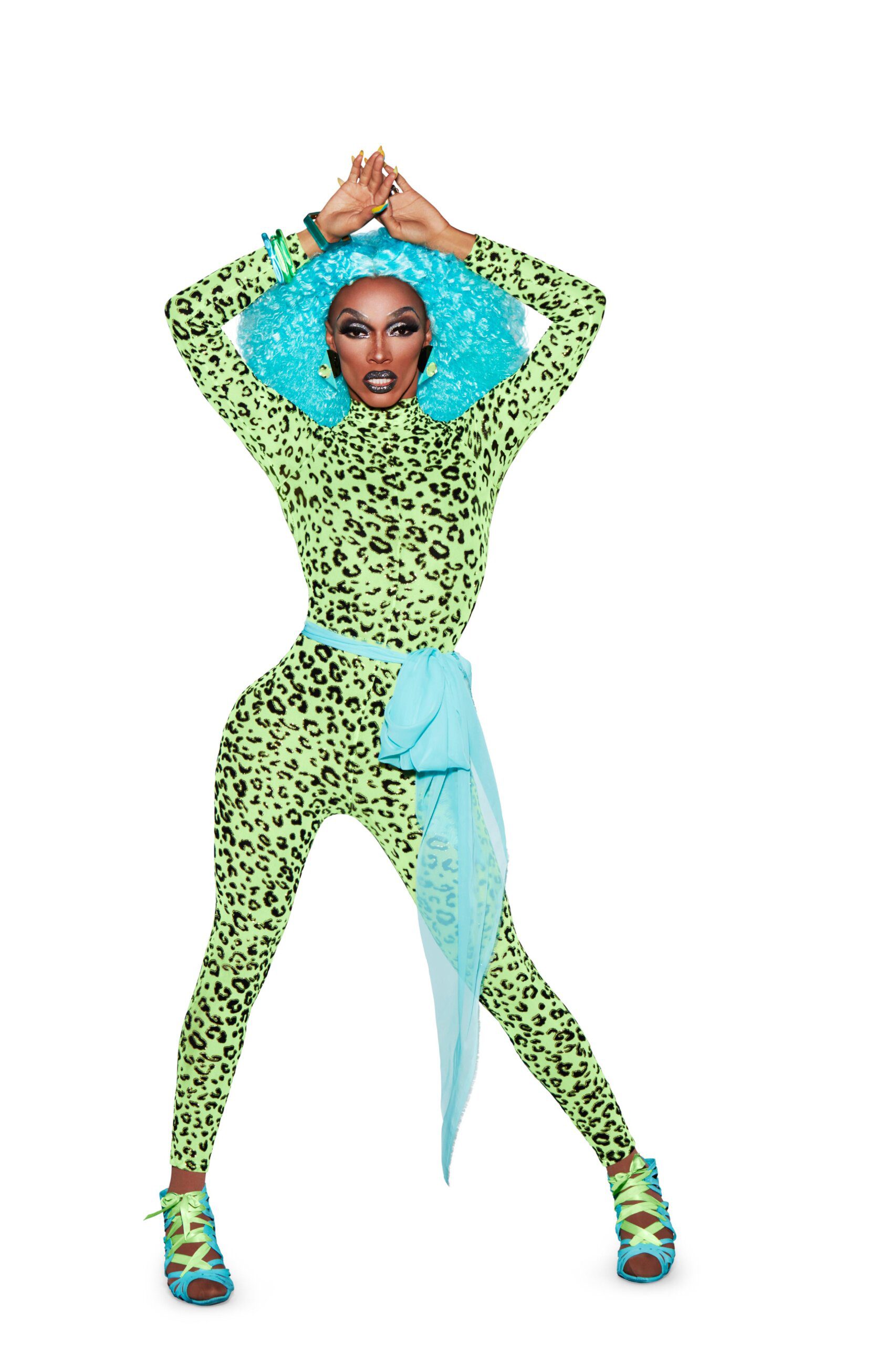
Credit: Courtesy World of Wonder
Many people seek to dismiss The Vixen’s contributions to the Drag Race world as just individual drama between herself and other queens of Season 10, namely Eureka! and Aquaria. But the message that the Chicago queen had for us was much larger than that. In a notable early back-and-forth between The Vixen and Aquaria, she deflated Aquaria’s repeated attempts to cry on camera by pointing out that behind the exchange was an unseen racial dynamic that could be played up for reality TV gold: a Black queen attacks a young, white queen until she cries, leaning into an unfortunate history of Black women and femmes being vilified on reality TV.
To reduce a message as structural as The Vixen’s to the level of “individual squabble” misunderstands her importance in not only the VH1 era, but any era of Drag Race. But while her message is timeless, it was also timely: the show’s fandom was growing and queens who fit a certain (white) mould that could garner fierce online followings started to dominate the show, The Vixen fought for the dignity of Black contestants and to make sure the show did not fall into the larger history of ignoring the contributions of Black queens. Many viewers, I’m sure, watch reality TV to unplug from the world. But The Vixen refused to let viewers imagine that Drag Race was separate from the world outside it, including all of the racism and racist microaggressions Black people face on a daily basis.
The show has not solved all of its race problems, but in the first season after The Vixen’s, it ushered in what many fans call the “Melanin Dynasty,” a streak of Black winners that includes Yvie Oddly, Monét X Change, Jaida Essence Hall, Shea Couleé and Symone. That streak would have been near impossible without Vixen’s interjection into the status quo, not only to the production team behind the show, but also to the fandom, who learned to love the show’s Black excellence.
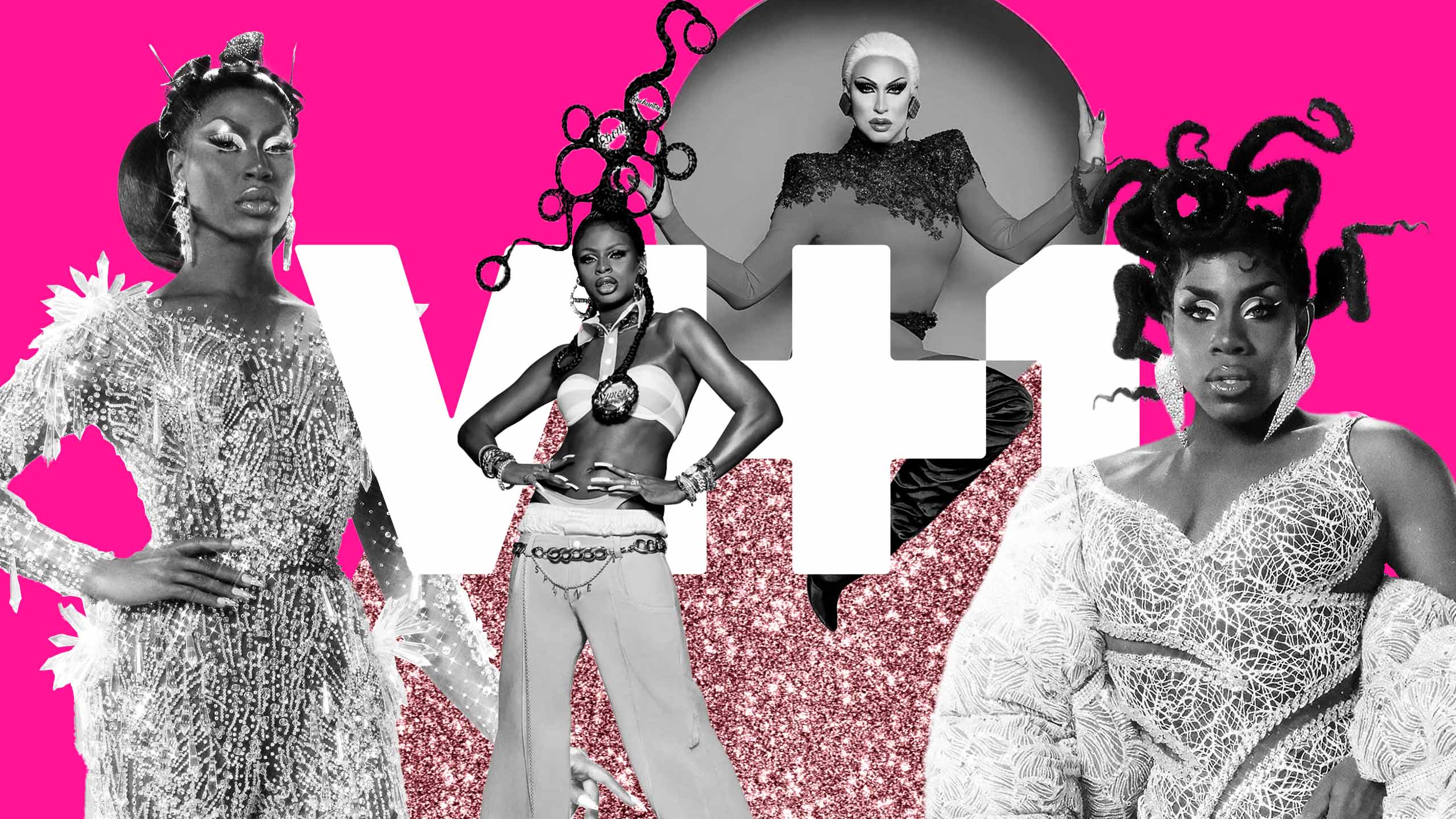


 Why you can trust Xtra
Why you can trust Xtra